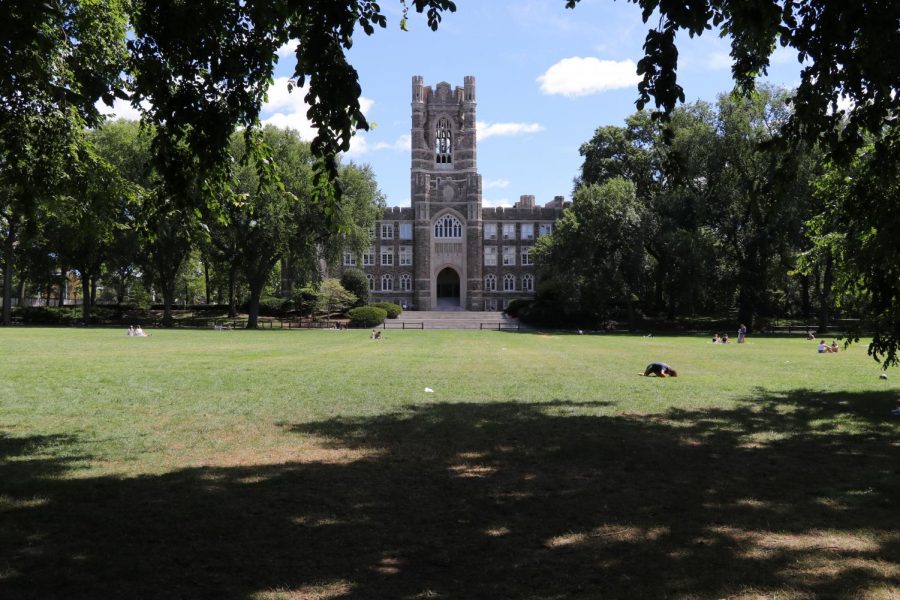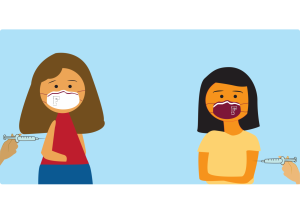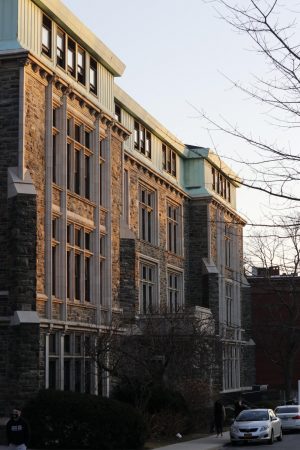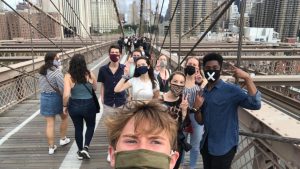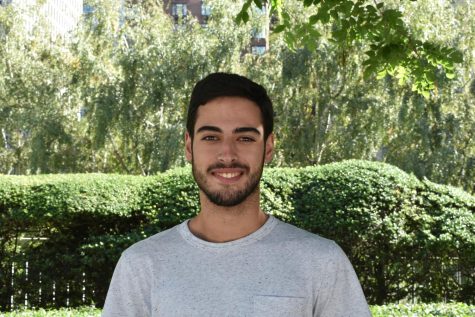Fallout From Rose Hill Outbreak Spreads Mistrust and Uncertainty
Shutting down its flagship campus to snuff an outbreak, Fordham still reckons with glaring neighborhood disparities
Although the Rose Hill campus reopened as initially scheduled two weeks after shutting down, there still remains much confusion as to how the university is working to prevent another outbreak from happening.
March 13, 2021
The Rose Hill campus entered a mandatory lockdown on Sunday, Feb. 14, after surpassing the New York state-mandated 5% infection rate threshold. This comes nearly a year after Fordham’s first shutdown in March of last year in response to the burgeoning outbreak of COVID-19.
Effects of the Outbreak At Rose Hill
The athletics department was forced to suspend all activities during the pause the, postponing the remainder of women’s basketball games and completely canceling the men’s water polo season.
Besides athletics, the university’s overall response to the outbreak has caused outrage, as seen by comments shared on accounts like @publicshamingfu and @letstalkaboutitfordham. Posts on the latter account detail accusations from quarantined students paying $40 a day for food delivery, receiving raw food and having keys to quarantined rooms being withheld. None of these claims have been independently verified by The Observer or the university.
Many students reported feeling especially concerned about the number of cases on the Rose Hill campus as the highly infectious U.K. variant had infected at least one community member.
But while the outbreak itself may have been halted, there remains much confusion over the administration’s response, as well as a sense of agitation over community members’ collective failure to prevent an outbreak.
All in-person classes and activities paused at Rose Hill on Feb. 14 after the campus reported over 100 new coronavirus cases. At the same time, the Lincoln Center campus continued to offer its in-person classes and made no changes to its protocol.
University President Rev. Joseph M. McShane, S.J., urged Lincoln Center community members to refrain from visiting Rose Hill and suspended all Ram Van shuttles between the two campuses.
Many students reported feeling especially concerned about the number of cases on the Rose Hill campus as the highly infectious U.K. variant had infected at least one community member. The U.K. variant is reportedly more infectious, as well as more damaging to the body.
Dylan Garvey, Fordham College at Rose Hill (FCRH) ’21 and head of day staff at Fordham’s Emergency Medical Services (FUEMS), believed the U.K. variant was “the main reason for the extremely high case numbers we had/are having at Rose Hill.”
Garvey used the NYS School Report, a coronavirus case tracker across educational institutions, to calculate a 341% increase in positive coronavirus cases university-wide compared to the previous semester. The Fordham neighborhood where Rose Hill is situated also reported a 7.07% positivity rate, compared to Lincoln Center’s neighborhood, which has a 2.97% positivity rate.
The Bronx Neighborhood Dilemma
The Fordham neighborhood in the Bronx has been disproportionately affected by the coronavirus, with a high number of cases just like Rose Hill, and the area has also received far fewer vaccines compared to whiter, wealthier neighborhoods.
According to Garvey, “inequities in social determinants of health, higher levels of mistrust in the healthcare system among people of color, greater occupational exposure, housing and living conditions” are responsible for the higher rates of infection in the Bronx, not the mere presence of the U.K. variant at Rose Hill.
FUEMS director Usemma Khan, FCRH ’21, said that while Fordham EMTs normally only serve the university community, they collaborate with local EMS services, such as the FDNY and smaller private services. Before the pandemic, FUEMS had been collaborating with local youth groups and school programs to teach EMS, as well as opening CPR certification classes to the Bronx community.
The onset of the pandemic forced FUEMS to redirect these resources and instead concentrate on providing 24/7 service to the university. “Now that we are getting back into the flow of things,” Khan said, “we plan to resume all of these initiatives as soon as possible.”
Black people and other people of color are already more likely to contract COVID-19 than white people, and they are even more likely to be admitted to the hospital for severe symptoms, especially if they’re non-native English speakers.
Regardless of FUEMS’ planned activities off-campus, the surrounding neighborhoods continue to disproportionately struggle from the pandemic, lagging behind whiter neighborhoods in vaccination rates and available quality health care coverage.
Communities of color have historically suffered from laws and beliefs that stem from white supremacy. From the racial “sciences” of eugenics that led to thousands of forced sterilizations nationwide to the redlining of communities of color by the Federal Housing Administration, non-whites continue to feel the detrimental legacies of these policies. Black people and other people of color are already more likely to contract COVID-19 than white people, and they are even more likely to be admitted to the hospital for severe symptoms, especially if they’re non-native English speakers.
The Rose Hill lockdown appears to have succeeded in curbing its outbreak, with the campus keeping around a percentage point below the New York state-mandated 5% threshold for shutting down as of a week after reopening. Lincoln Center, on the other hand, has consistently fared well, reporting substantially fewer cases throughout the school year.

